by Brooks Riley
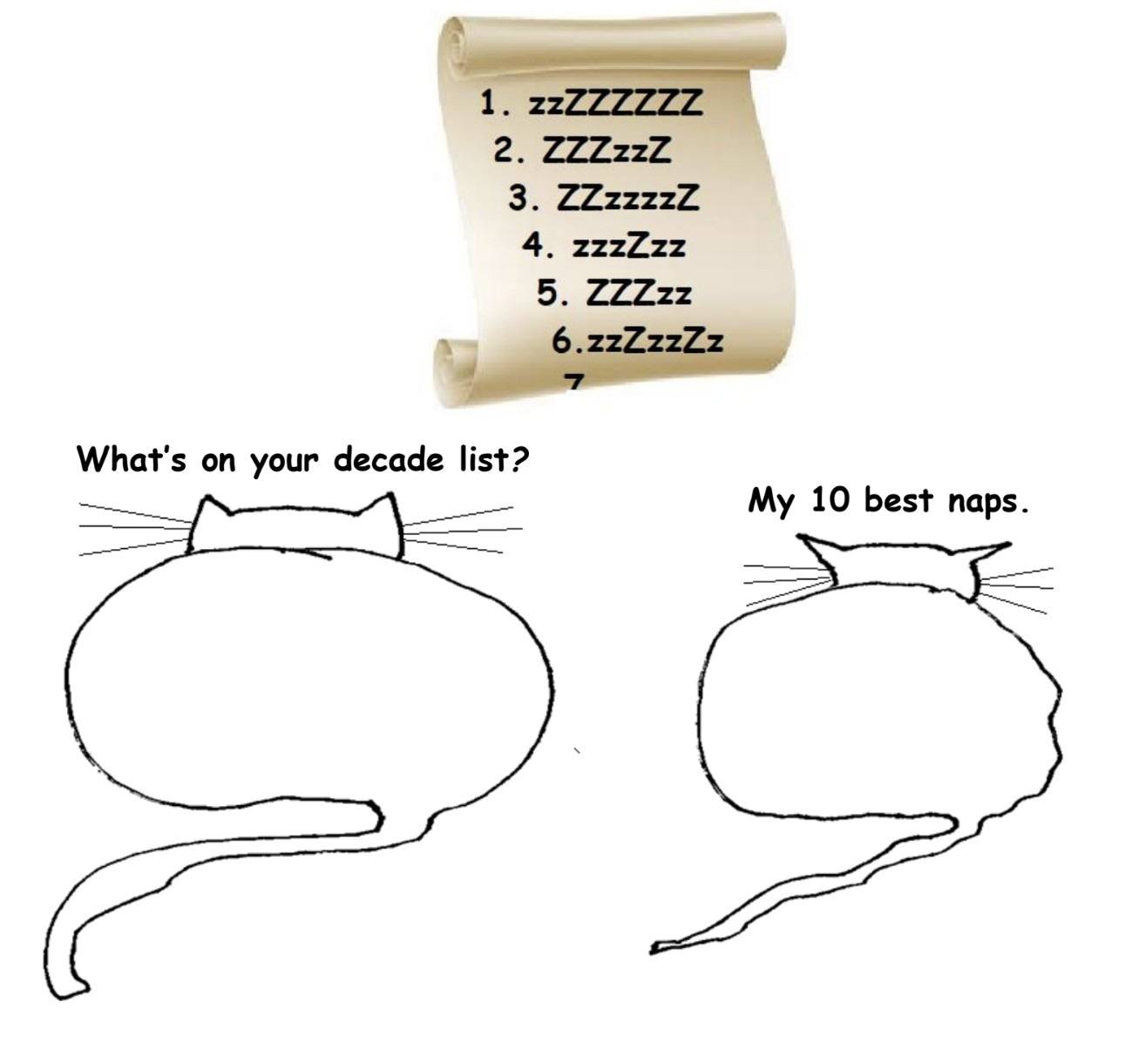
by Brooks Riley

by R. Passov
The economics of health insurance is of particular importance today. Health insurance has become a major issue of public policy. Some form of national health insurance is very likely to be enacted within the next few years. —Martin Feldstein 1
 Fifty years ago, when healthcare expenditures were a mere 6% of US GDP, Martin Feldstein was afraid that the seemingly imminent adoption of some form of national health insurance would cause health care spending to grow unchecked.
Fifty years ago, when healthcare expenditures were a mere 6% of US GDP, Martin Feldstein was afraid that the seemingly imminent adoption of some form of national health insurance would cause health care spending to grow unchecked.
Turns out, like many economists, he was half right. While a truly national health scheme is still in the making, health care spending is now 18% of GDP, and growing.
Feldstein, known to his friends as Marty, was an interesting guy. For outstanding contributions to economics by an economist under 40, he was awarded the Bates Medal. He was President Reagan’s chief economic advisor, a long-time teacher at his alma matter, Harvard, and managed to retain the presidency and CEO titles at the National Bureau of Economic Research (NBER) from 1977 until his passing in 2019. (He stepped aside from 1982 to 1984 to serve Reagan.)
The NBER describes itself as a private, non-profit research organization and then adds that it has been the source for most leaders of the Council of Economic Advisors. The Council is in fact a government entity, constituting the chief economic advisors to the Office of the President, while the National Bureau, which sounds like it is, is not.
Anyway, fifty years ago, Feldstein took his economics – the ‘markets solve everything’ kind – and reached the following conclusion: The problem with healthcare is Health Insurance. Eliminate insurance wrote Feldstein, and market forces would reign in the runaway price of health services. Read more »

Mark Moffett’s The Human Swarm: : How Our Societies Arise, Thrive, and Fall (Basic Books 2019) is nothing less than a comprehensive review and synthesis of the academic literature on social life in humans and a wide variety of animals, including, among many others, ants, whales, jays, wolves, and chimpanzees. While written for general readers, this book will repay academic specialists of various disciplines in the humanities and social sciences.
It is at heart a work of natural philosophy, an old term not in much use anymore. Moffett is interested in what constitutes society: how do we differentiate between insiders and outsiders? To do so he surveys the animal world and follows the distinction in the evolution of human societies from hunter-gatherer groups to the current day. Though Moffett has the skills and credentials of an academic specialist (he has a Harvard Ph. D.), he has written the kind of book specialists are discouraged from writing. That is all the more reason why those specialists must join interested “civilians” in reading The Human Swarm. For it is in books like this that many narrow specialized understandings are combined and synthesized into a more comprehensive understanding, in this case, understanding of the critically important issue of social identity. Read more »
by Bill Murray

This is Part Two in a series. Read Part One here.
Sooner or later even the best laid plans come full stop at the bureaucrat’s desk. At the entrance to Ngorongoro crater, Tanzania, we pull up short at a moldy branch of officialdom, no less out of place than some forlorn Chinese outpost on the Tibetan steppe. This requires twenty minutes of perfunctory paperwork, at night.
Stamp pads come out, ledgers are opened, numbers and details are transcribed and we will not proceed until the clerks accede. Which finally they do.
Difficult to get our bearings, arriving in the dark. There is only the tiny new moon that heralded Eid-al-Fitr, the end of Ramadan, and there are no lights out there because there is nothing built in the crater. We gaze into the gaping chasm for a while and then go off to eat.
I don’t know about this place. The restaurant is thatch-roofed, and the sound of gentle rain is comfy, but it’s scary how big and full the dining room is.
“We have more than 140 guests,” The server beams. I stare into my rice.
You want to be the only ones, the wilderness, the animals – Africa! – all to yourself. But this place is not like that.
Still, the shower is hot and a candle is provided. Alongside the candle is a matchbox with two, count ’em, matches. “Cleanext” brand tissues. Power goes out sometimes. Then it’s so dark you can’t even begin to see a thing outside. Not one thing. Anywhere. Clouds cover the little moon. Just 100% dark. Totality. Read more »
by Akim Reinhardt
Stuck is a weekly serial appearing at 3QD every Monday through early April. The Prologue is here. The table of contents with links to previous chapters is here.
![]() Back in 2014 I circled the country. It was a very long trip. From late August to early November I drove over 9,000 miles, all of it by myself. For many people, perhaps most, that kind of marathon driving day after day, particularly without someone to talk to, is only made bearable by listening to music. And given my own background, which has includes stints as a radio DJ, music critic, and rankly amateur musician, most everyone I know assumes I fall into that camp. Which is why they’re often shocked to find out that I don’t.
Back in 2014 I circled the country. It was a very long trip. From late August to early November I drove over 9,000 miles, all of it by myself. For many people, perhaps most, that kind of marathon driving day after day, particularly without someone to talk to, is only made bearable by listening to music. And given my own background, which has includes stints as a radio DJ, music critic, and rankly amateur musician, most everyone I know assumes I fall into that camp. Which is why they’re often shocked to find out that I don’t.
In fact, I do most of my long distance driving in silence. No mp3s, no CDs, no tapes, no radio, no singing outloud. Just the sounds of the road.
I love music as much as anyone I’ve ever known, but there is a time and a place for everything. And for me, the open road at 80 miles per hour is usually the time and place when I breath easily and clear my mind. I settle into the groove of the engine and the hum of the rubber rolling over the blacktop. I stare calmly at the world passing by. After a while, driving the contours of America becomes meditative. There’s no knowing what will pass in and out of my mind hour after hour. And when I finally pull over with a few hundred more miles on the odometer, I feel mentally refreshed and damn near at peace.
Often in my travels, there is no space for music roaring from the car speakers. Instead, I mostly crave the quiet, ambient sounds of the road and the magnificent machine that transports me over it.
When I tell people this, they often look at me in horror. Read more »
by Scott F. Aikin and Robert B. Talisse
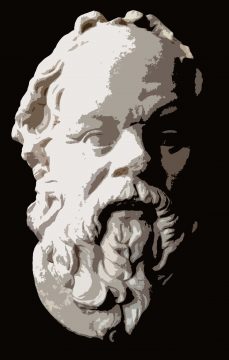
When people talk about Socrates, they typically refer to the leading character in Plato’s dialogues. This is because little is known about the historical Socrates beyond the fact that he wandered barefoot around Athens asking questions, an activity that got him executed for religious invention and corrupting the youth in 399 BCE. The relation between the historical figure and the Platonic character is debatable. In any case, Plato’s Socrates is most commonly read as a staunch anti-democrat. However, once one distinguishes between being opposed to democracy from theorizing the ways democratic society can fail, the relationship between Socrates and democracy grows more complicated.
The depiction of Socrates as an anti-democrat draws largely from the scathing critique he launches in Plato’s masterpiece, The Republic. There, Socrates famously characterizes democracy as the rule of the unwise, corrupt mob. Like children loose in a candy store, the democratic herd pursues pleasure only, rewarding sweet-talkers and flatterers with the power of political office, who in turn exploit politics for their own gratification. The result is injustice. Accordingly, Socrates says, democracy ultimately dissolves into tyranny — a population of citizens dominated by their basest desires, and an opportunistic ruler that manipulates them for personal gain.
Socrates’ critique of democracy is formidable. Notice, however, that Socrates is laying out a vulnerability inherent within democratic politics that no advocate of democracy can afford to ignore. In fact, the tradition of democratic theory is largely focused on identifying ways in which this vulnerability can be mitigated. And popular discussions today about disinformation, corruption, and incivility tend to concede much of Socrates’ case. The point is that giving voice to a standing weakness of democracy does not by itself make one an anti-democrat. One might argue that a crucial part of democratic advocacy is to engage in criticism of extant democratic practice.
Yet in The Republic, Socrates also lays out a vision of the perfect city, the kallipolis, and it is decidedly undemocratic. Kallipolis is an absolute kingship where philosophers rule over a strictly stratified society in which everything is exactingly regulated, from education, production, and conquest to art, diet, sex, and parenting. According to the standard line, that Socrates proposes the kallipolis as the paradigm of justice entails that he is an anti-democrat. Read more »
Two young men greeted a new crew member on a ship’s quarterdeck almost 60 years ago to the day and, in a matter of weeks, by simple challenge, introduced this then 18 year-old who’d never really read a book through, to the lives that can be found in them. —Thank you A. Gaeta and E. Budde for your life-altering tinkering.
… —A night walk to the base library
The bay to my right (my rite of sea and asphalt:
I hold to shoulder, I sail, I walk the line)
the bay moved as I moved, but retrograde
as if the way I moved had something to do
with how the black bay moved
(as if in animation) backward, how it tracked
how it perfectly matched my pace, but
in direction opposed (Albert would have
a formula or two to say about this
if he were here), behind, over shoulder
a steel grey ship at pier transfigured
in cloud of cool white light— a spray
from lamps on tall poles ashore, and aboard
from lamps on mast and yards
among pins of antennae
that gleamed above its raked stack—
an electric cloud, a photon aura edges
feathered into night enveloped it as it lay
upon the shimmering skin of bay,
from here she’s still as the thought
from which she came: upheld steel on water
arrayed in light, heavy as weight, sheer as a bubble,
the line of pier beyond etched clean
as if cut by horizon’s knife
… ahead, a library
… behind, a ship at night
the bay to my right (as I said) slid dark
as the confluence of all nights
the light of low barracks and high offices
of base ahead spread west and skip off bay
each of its trillion tribulations jittering at lightspeed
fractured by bay’s breeze-moiled black surface in splintered sight
ahead the books I aim to read,
books I’ve come to love since Anthony & Ed
in the generosity of their own fresh enlightenment
teamed to bring bright tools to this greenhorn’s
stymied brain to spring its self-locked latch
to let crisp air in fresh as this breeze —and how
that breeze blew across a bay from where to everywhere
troubling Narragansett from then to me here now!
Jim Culleny
12/16/19
by Anitra Pavlico
 As I sit here marveling at the inexorability of deadlines, even in the midst of holiday cheer, I consider that I should, in the absence of time for research ventures, write about “what I know.” Isn’t that the default advice for people who don’t know what to write about and don’t want to come across as false? Well, I spend at least half of my time, and most of my psychic energy, on tasks stemming from being a mother. But do I “know” anything about it? For example, how do you get your child to become a good person, and by that I don’t mean compliant or obedient, but ethical? I spend a lot of time fretting about it, but I don’t know if I have any answers.
As I sit here marveling at the inexorability of deadlines, even in the midst of holiday cheer, I consider that I should, in the absence of time for research ventures, write about “what I know.” Isn’t that the default advice for people who don’t know what to write about and don’t want to come across as false? Well, I spend at least half of my time, and most of my psychic energy, on tasks stemming from being a mother. But do I “know” anything about it? For example, how do you get your child to become a good person, and by that I don’t mean compliant or obedient, but ethical? I spend a lot of time fretting about it, but I don’t know if I have any answers.
There are different schools of thought. One uses promises of gifts or other rewards. My husband’s friend has recommended Oreos as a relatively inexpensive behavior modification device. A variant of this philosophy cajoles children into thinking that whenever they act rightly, some outside entity, beyond the family unit, will reward them. Santa Claus is an outcropping of this parenting-out-of-desperation. One problem with this is that, as they grow older, young people soon realize that there is no one who necessarily rewards them when they act in a moral or ethical manner. Who’s to say whether children who became addicted to rewards following right actions might abandon the high road when the rewards stop coming?
Another school of thought relies on the threat of force or other recrimination. Sadly, these methods have waned, but haven’t completely gone out of style. Do this, or I will do that. Don’t do this, or I will take away that. Yet even children are aware that bad behavior is not always punished. After all, if you do something wrong while the strict teacher’s back is turned, there may be no repercussions at all. Instead of a sense of guilt, there is exhilaration at escaping a harrowing punishment. It is hard to see where the learning takes place. Read more »

Leopold Blaschka and Rudolf Blaschka. Rotten Apples: Botanical Models of Diversity and Disease
“… models of rotting apples infected with various fungi and bacteria. Also included are models of rotting and scabbing plums, pears, and apricots. The exhibition is part of Harvard’s Ware Collection of Blaschka Glass Models of Plants …”
by Christopher Horner
We have it in our power to begin the world over again —Tom Paine
How is it that we hear the loudest yelps for liberty among the drivers of negroes? —Dr Johnson

That the Age of Revolution and Rights was also the Age of Slavery and Empire is well known. Less obviously, it was also the time (roughly 1775-1835) which a template was established for the control and exploitation of citizens and subjects which has lasted into our own day. The rhetoric of liberty and equality accompanied a reality of control and subordination. It still does.
In The Origins of Totalitarianism, Hannah Arendt commented that the French Declaration of the Rights of Man (1789) marked a historic turn: a claim that man was now ‘emancipated from all tutelage and announced he had come of age’ [1]. It is an echo of Kant’s 1786 answer to the question ‘What is Enlightenment?’: for him, it is the end of tutelage, casting aside the would-be guides (and gaolers) in the shapes of priest and King, in order to achieve maturity which Kant takes to be thinking for oneself. He adds that this must involve the free use of public reason, the uncensored exchange of opinion between citizens qua citizens – as distinct from the use of the private reason of the specialist, bureaucrat, etc. Kant’s message then, and that of the Declaration, is anti-paternalist, invoking the ideal of a mature citizenry. A core meaning of the politics of Enlightenment: free citizens, deliberating together without the miasma of superstition, taboo or state censor. But this is a kind of promise, not an accomplished fact, a statement of what might be about to emerge. Read more »
Dr. Alan Burnett has a main research interest in the development of treatments for Acute Myeloid Leukemia. He has served on numerous advisory committees and is a past President of the British Society of Haematology and Chair of the UK National Training Programme. Professor Burnett was appointed as Chair of the National Cancer Research Institute Haematological Oncology Study Group. He was elected as a Fellow of the Academy of Medical Science in 2002, was awarded the Gold Medal of the British Society for Haematology in 2004 and gave the prestigious Ham Wasserman Lecture at the American Society of Hematology meeting in 2012. Currently, he is a Professor at the University of Glasgow in Scotland.
Azra Raza, author of The First Cell: And the Human Costs of Pursuing Cancer to the Last, oncologist and professor of medicine at Columbia University, and 3QD editor, decided to speak to more than 20 leading cancer investigators and ask each of them the same five questions listed below. She videotaped the interviews and over the next months we will be posting them here one at a time each Monday. Please keep in mind that Azra and the rest of us at 3QD neither endorse nor oppose any of the answers given by the researchers as part of this project. Their views are their own. One can browse all previous interviews here.
1. We were treating acute myeloid leukemia (AML) with 7+3 (7 days of the drug cytosine arabinoside and 3 days of daunomycin) in 1977. We are still doing the same in 2019. What is the best way forward to change it by 2028?
2. There are 3.5 million papers on cancer, 135,000 in 2017 alone. There is a staggering disconnect between great scientific insights and translation to improved therapy. What are we doing wrong?
3. The fact that children respond to the same treatment better than adults seems to suggest that the cancer biology is different and also that the host is different. Since most cancers increase with age, even having good therapy may not matter as the host is decrepit. Solution?
4. You have great knowledge and experience in the field. If you were given limitless resources to plan a cure for cancer, what will you do?
5. Offering patients with advanced stage non-curable cancer, palliative but toxic treatments is a service or disservice in the current therapeutic landscape?
by Elizabeth S. Bernstein
 In 1885 Mary Terhune, a mother and published childcare adviser, ended her instructions on how to give baby a bath with this observation:
In 1885 Mary Terhune, a mother and published childcare adviser, ended her instructions on how to give baby a bath with this observation:
When perfectly dry, his flesh sweet and pure with the exquisite lustre imparted by bath and friction, he is the most kissable object in nature.1
A quarter century later, at the tail end of the Victorian era, another mother and author, Marion Foster Washburn, offered a similar assessment of infant massage:
Nothing on earth is so delicious to the touch as the firm, fine flesh of a healthy baby! In these strokings and kneadings, something of your mother-love and magnetism passes over into the baby, and you are more closely bound to each other. . . . Touch is especially the love-sense, and we, who cannot yet make little children understand the words, can tell them, through our hands, how dear they are to us and how tenderly we care for them.2
“Tenderness,” in English translation, is also the word Sigmund Freud regularly used to describe the relationship of parent and child. But in his case it was used primarily in the context of warning. The mother, he wrote in 1905, “supplies the child with feelings which arise from her own sexual life; she pats him, kisses him, and rocks him, plainly taking him as a substitute for a perfectly valid sexual object. . . . Excessive parental tenderness surely becomes harmful, because it ‘spoils’ the child and makes him unfit to renounce love temporarily, or to be satisfied with a smaller amount of love later in life. . . . [N]europathic parents, who usually display excessive tenderness, often awaken with their caressing a disposition for neurotic diseases.”3
How much tenderness was too much? Read more »
by Michael Klenk

While some people voluntarily act out their private lives on the public stage, the vast majority tries to maintain some privacy – by drawing a firm distinction between their private and public lives. But at the same time, almost all of us are using connected technologies like mobile phones, wearable devices, social media, search engines, or web-shops. By using connected technologies, we leave a conspicuous trail of data traces, and to the trained eye, innocuous traces can tell exciting stories – no less (and perhaps more) revealing than the party-pictures some voluntarily share on Facebook.
For example, the New York Times recently used readily available phone-usage data to trace, amongst other things, someone frequently visiting roadside motels at night-time for an hour each. The Times could have easily revealed the name of that person and determined what exactly was going on at the motels, which illustrates that data scientists, modern-day trappers if you will, need less and less effort to read such intimate stories off these seemingly innocuous traces. Almost anyone is thus opening up about their private lives in the public domain.
In consequence, privacy may well be dead – killed by the ubiquitousness and necessity of using connected technologies – at least if we maintain an old conception of privacy that needs a distinction between the public and the private sphere. We may not find that distinction born out by the world anymore, and consequently, we might be looking for privacy in vain. And yet, most people do not conclude that privacy is dead – instead, they offer new interpretations of the concept of privacy in response to the new realities created by connected technologies. Read more »
by Brooks Riley
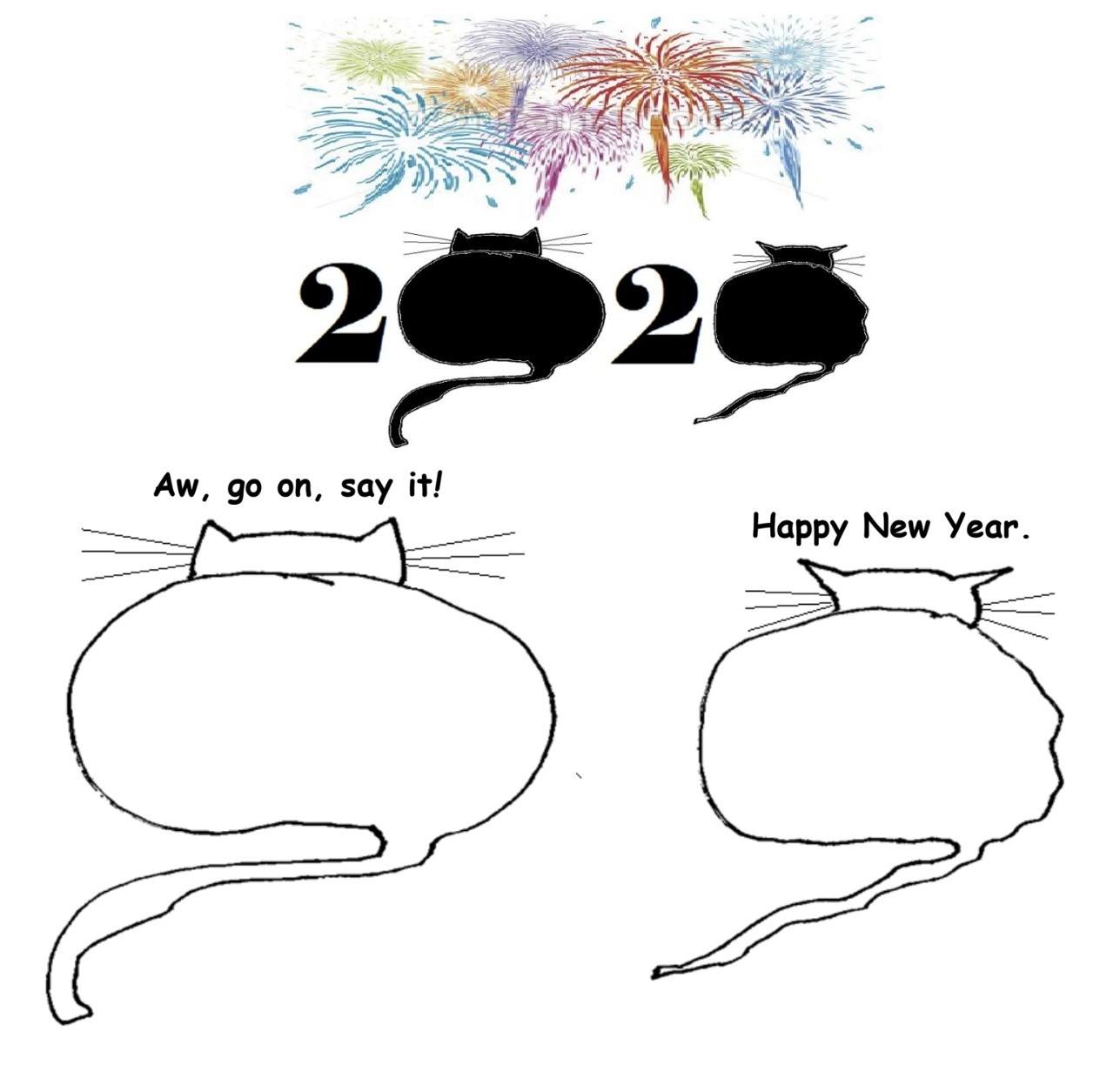
by Tim Sommers
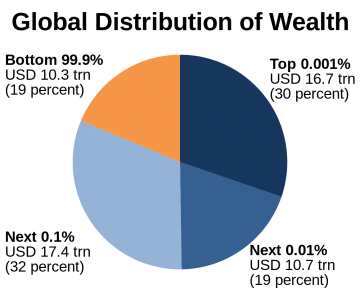 A 2011 survey by Michael Norton and Dan Ariely, of Harvard’s Business School, found that the average American thinks the richest 25% of Americans own 59% of the wealth, while the bottom fifth owns 9%. In fact, the richest 20% own 84% of the wealth, and the bottom 40% controls only 0.3%. An avalanche of studies has since confirmed these basic facts: Americans radically underestimate the amount of wealth inequality that exists – and the level of inequality they think is fair is lower than actual inequality in America probably has ever been. As journalist Chrystia Freeland put it, “Americans actually live in Russia, although they think they live in Sweden. And they would like to live on a kibbutz.”
A 2011 survey by Michael Norton and Dan Ariely, of Harvard’s Business School, found that the average American thinks the richest 25% of Americans own 59% of the wealth, while the bottom fifth owns 9%. In fact, the richest 20% own 84% of the wealth, and the bottom 40% controls only 0.3%. An avalanche of studies has since confirmed these basic facts: Americans radically underestimate the amount of wealth inequality that exists – and the level of inequality they think is fair is lower than actual inequality in America probably has ever been. As journalist Chrystia Freeland put it, “Americans actually live in Russia, although they think they live in Sweden. And they would like to live on a kibbutz.”
Thomas Piketty ramped up the inequality debate, a couple of years later, with “Capital in the Twenty-First Century”, a massive 250-year survey of wealth inequality. He discovered that r > g. That is, the rate of return on investment is always greater than growth. The rich really are getting richer – and the poor? Well, not so much. The post-war middle-class, Piketty warned, may well have been a historical anomaly. Economic inequality is likely to get worse – and never get better – without coordinated international action. The good news is that not one, but two, serious candidates in the current Democratic Presidential Primary are endorsing versions of Piketty’s “Wealth Tax” – Bernie Sanders and Elizabeth Warren. (And, by the way, the English-translation of Piketty’s latest book, “Capital & Ideology” is due out in March.)
So, what should the distribution of wealth be? What does justice have to say about wealth inequality? Read more »
by Adele A Wilby
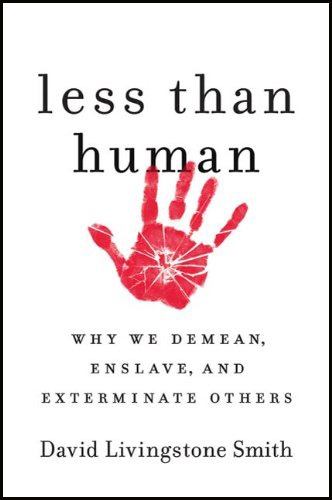 We are all aware that from amongst the vast diversity of life forms that inhabit the earth, human beings are exceptional. But while human beings are capable of inexhaustible creativity and goodness, they also have the potential to commit the most heinous acts and demeaning of fellow human beings. Accounting for such a phenomenon in the human condition and the committing of abominable acts towards their own species, is an issue that perplexes many. Perhaps the answer to such a question can be found by studying the genes or analysing the brain functioning of the perpetrators, but that could involve investigating entire populations who knowingly condone or participate in such acts. A simpler answer could be that human beings have yet to evolve into a species that is incapable of acts of inhumanity. David Livingstone Smith’s book Less than Human: Why We Demean, Enslave, and Exterminate Others offers us insight into the processes that lead to the designating of fellow human beings as ‘subhuman’ and makes possible the potential for human beings to perpetrate acts that can only be considered as evil.
We are all aware that from amongst the vast diversity of life forms that inhabit the earth, human beings are exceptional. But while human beings are capable of inexhaustible creativity and goodness, they also have the potential to commit the most heinous acts and demeaning of fellow human beings. Accounting for such a phenomenon in the human condition and the committing of abominable acts towards their own species, is an issue that perplexes many. Perhaps the answer to such a question can be found by studying the genes or analysing the brain functioning of the perpetrators, but that could involve investigating entire populations who knowingly condone or participate in such acts. A simpler answer could be that human beings have yet to evolve into a species that is incapable of acts of inhumanity. David Livingstone Smith’s book Less than Human: Why We Demean, Enslave, and Exterminate Others offers us insight into the processes that lead to the designating of fellow human beings as ‘subhuman’ and makes possible the potential for human beings to perpetrate acts that can only be considered as evil.
Crucial to Livingston Smith’s argument is the concept of dehumanisation.He defines the term as ‘the act of conceiving of people as subhuman creatures rather than as human beings’, and it has two components: thinking in terms of what people lack, and as thinking of them as less than human. While people might be dehumanised in different ways, as for example, the objectification of women, Livingstone Smith is concerned with the dehumanisation of peoples that enables the perpetration of genocide, slavery, and war. Read more »
A couple of years ago I accompanied my friend (and 3QD colleague) Morgan Meis to Basel, Switzerland, so he could look at this painting called The Fate of the Animals by Franz Marc as part of some research he was doing for a book. I took this photo of him and thought it made a nice visual metaphor for looking back at this past year which will conclude tomorrow. Happy New Year, People!
by Shadab Zeest Hashmi

Ami, my mother, does my hair, “Helen-of-Troy-style,” a high pony tail with strands wrapped around it on days there is extra time before school. She remembers the hairdo from an old movie which she talks about often, along with her other favorite The Taming of the Shrew with Liz Taylor. When she combs, she hums, mostly Urdu songs, occasionally Punjabi. Since settling in Peshawar, she has taught herself Pashto not only because it isn’t easy to run a household and her myriad projects without knowing the local language, but because she has a genuine love for connecting with people of all kinds, everywhere. We joke that she can make friends while crossing the road; this is something she and I don’t have in common. I tend to be withdrawn, like my father, content with my books and thoughts.
There are times when I do enjoy going on outings, especially when Ami takes me on an excursion to the old city and shows me how herbs, spices, henna, tealeaves, and grains of every kind are sold box-less, displayed in smooth mounds. I like to walk through the narrow streets with her, taking in the crisp, salty aroma of street food, the colors of sherbets, glass bangles, sparkly trim for dupattas, watching shopkeepers with their paraphernalia— their weighing scales, aluminum scoops and glossy brown paper bags. The joy of walking through a bazar, which will become a subject I’ll explore for years in my writing, begins here. I feel certain that if I were to put my ear to the ground, I’ll hear the tread of Silk Road caravans. My curiosity about how cultures of encounter are formed and revealed in the marketplace— about trade- and work habits, competition and conflict, creative marketing, the ethos of fair-play and equality and the complex dynamics of cosmopolitanism— is born as a result of watching my mother interact. I’m astonished by how she varies the language or dialect, accent or register, “code-switching” naturally as she goes. Read more »
Stuck is a weekly serial appearing at 3QD every Monday through early April. The Prologue is here. The table of contents with links to previous chapters is here.
by Akim Reinhardt
 This song got caught in my head as I circled the country in my 1998 Honda. Leaving New York City, I drove west into the heart of America, up to the Dakotas, out to California, down the Golden State, and then back along the Southern route before angling northward to Baltimore. I saw nearly all the America you can see. But of course there’s not just one America. There are many.
This song got caught in my head as I circled the country in my 1998 Honda. Leaving New York City, I drove west into the heart of America, up to the Dakotas, out to California, down the Golden State, and then back along the Southern route before angling northward to Baltimore. I saw nearly all the America you can see. But of course there’s not just one America. There are many.
The environment shifts dramatically along the way. So too do the people. From densely packed cities to sparsely populated rural areas. From little towns dotting the countryside to sprawling suburbs that fade into forest or desert or grasslands. It is a vast expanse, the world’s third largest nation in both square mileage (behind Russia and Canada) and population (behind China and India). When I was a kid there were 200,000,000 people. Or so a Burger King commercial told us. Now we’re closing in on 350,000,000.
It takes all types. But of course some types get more attention than others. Mass media consistently highlight white people, the major exception being black entertainers (mostly athletes and singers) and criminals. Men continue to dominate positions of power and prestige. The coasts boast most of the population, and sneeringly refer to the middle as “fly over country.” And the cities and suburbs, home to the vast majority of Americans, largely ignore the small towns and rural areas that actually makeup most of the physical landscape.
My own life illustrates many of America’s different faces. Read more »